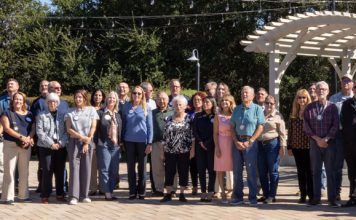Across the country, a quiet revolution is changing how small towns and cities operate. It’s not led by billion-dollar investments or top-down mandates, but by neighbors with ideas—and local governments willing to say YES.
This movement is called “Idea Friendly,” a term coined by the principals of Save Your Town. It describes communities that make it easier for people to act, experiment and contribute to local life without being bogged down in bureaucracy.
At its core, being idea-friendly means shifting from gatekeeping to connecting. Instead of saying “you can’t do that,” local leaders ask, “how can we help?” That simple shift creates space for small ideas to grow into meaningful change.
In her book “Save Your Town: From Possibilities to Reality,” co-founder Deb Brown shares inspiring examples of places where residents—and local governments—work together to make good things happen. It’s not about expensive programs. It’s about clearing a path and giving people the confidence to start.
A shining example of this philosophy in action is Superior, Arizona, a small town east of Phoenix. Not only has Superior embraced the Idea Friendly mindset; they’ve also embedded it into how Town Hall operates daily. They’ve created the following list of 10 guiding principles that reflect a commitment to service, collaboration and responsiveness:
- Keep an open door and help citizens solve problems.
- Use leadership influence—not just funding—to support local efforts.
- Offer public facilities affordably to boost local programs.
- Honor and engage with civic groups.
- Do what you can (within the rules) to help people.
- Fix unfair ordinances rather than enforce bad ones.
- Seek out collaboration.
- Support others’ ideas and step aside when appropriate.
- Eliminate permit backlogs and prioritize timeliness.
- Know the code well enough to say yes.
This approach echoes the wisdom of economist E.F. Schumacher, who wrote in his 1973 book “Small is Beautiful: A Study of Economics as if People Mattered.”
In any organization, large or small, there must be a certain clarity and orderliness. Yet, orderliness, as such, is static and lifeless; breaking through the established order, to do the thing never done before, never anticipated by the guardians of orderliness, the new, the unpredicted and unpredictable outcome of a man’s creative idea.
If no scope remains for man to exercise his creative intuition… the organization becomes moribund and a desert of frustration. Therefore, any organization has to strive continuously for the orderliness of order and the disorderliness of creative freedom.
It also reflects a warning from Jeff Siegler, author of “Your City is Sick,” who writes in the foreword to the newly released book “Red Tape Empire,”
“When someone wants to do good but is blocked by government bureaucracy… it creates a chilling effect on civic participation… Over time, this leads to a disengaged public, lack of innovation and the slow erosion of the very things that make a place vibrant and worth living in.”
That’s why the Idea Friendly model matters. It helps towns avoid becoming places where nothing new happens—not because people don’t care, but because the system makes it too hard to try.
By contrast, Idea Friendly communities create momentum. They invite participation. They say yes!
And in today’s world, that might be the most powerful thing a local government can do.
Gary Walton
Gilroy















